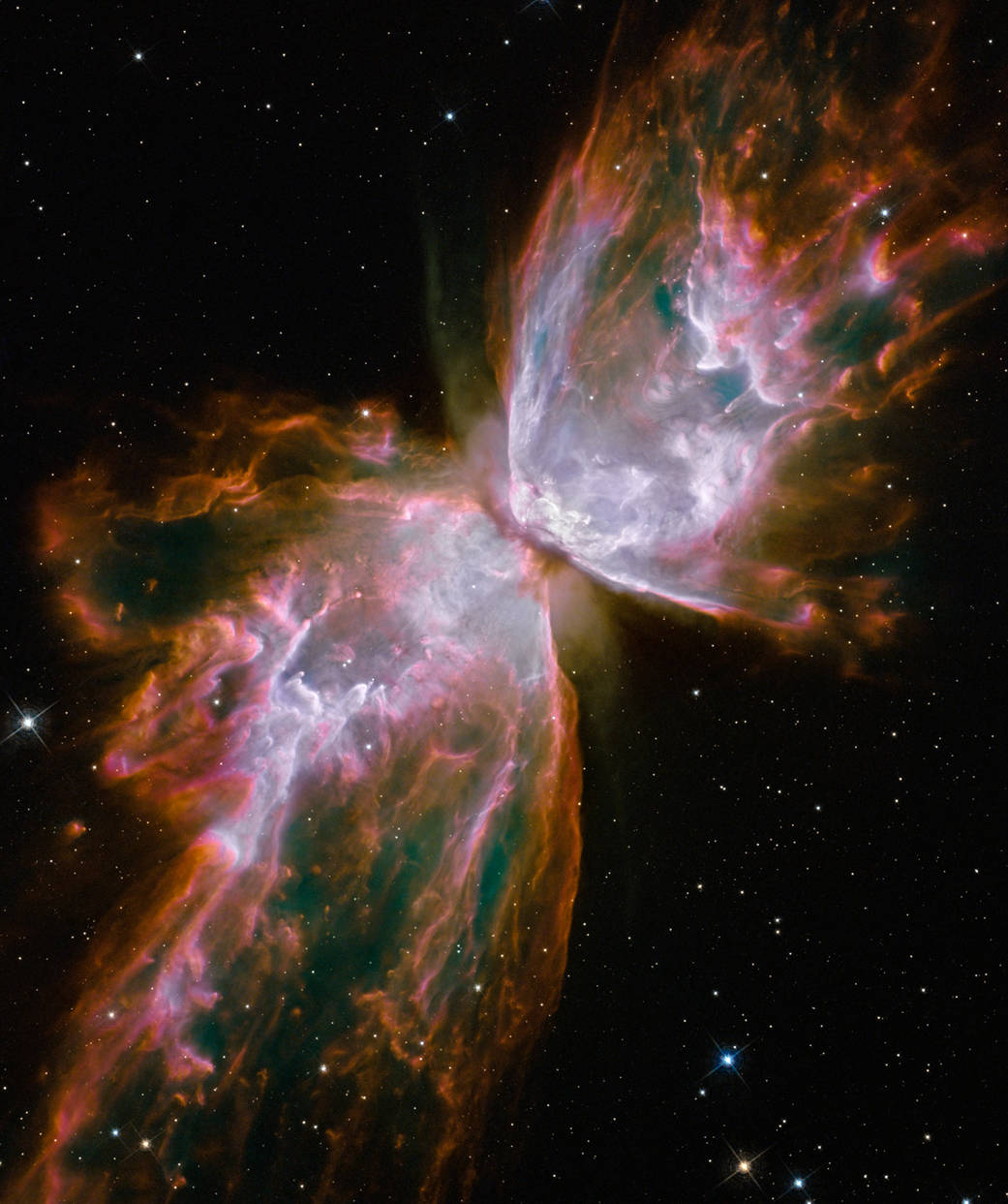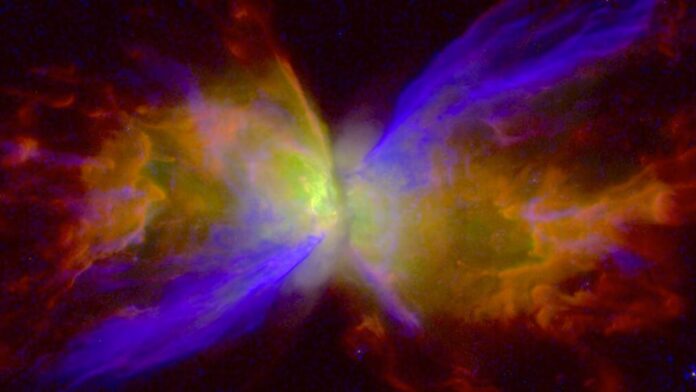Deep in the constellation Scorpius, a cosmic butterfly spreads its wings.
Meet NGC 6302, an enormous shell of glowing gas better known as the Butterfly Nebula. Located about 4,000 light-years from Earth, the double-winged nebula is a spectacular example of what happens when stars like the sun run out of fuel and die.
Hidden at the point where the two wings meet, a once-mighty star now smolders as a tiny, collapsed white dwarf; the “wings” themselves are the remains of that star’s outer layers of gas, which were expelled violently into space thousands of years ago when the star inevitably ran out of nuclear fuel to burn, and died. Today, those wings span more than 3 light-years, or several thousand times wider than the solar system, according to NASA (opens in new tab).
Related: ‘Butterfly’ nebula glides across a starry sky in beautiful new video
For more than a century, astronomers have tried to understand why the Butterfly Nebula took on such a distinct insectile shape while most other nebulas expand into space in neater, circular patterns. New time-lapse images of the nebula presented Jan. 12 at the 241st meeting of the American Astronomical Society in Seattle offer some fresh clues.
By comparing two Hubble Space Telescope images of the butterfly’s wings taken in 2009 and 2020, researchers have discovered strange new processes driving the nebula’s growth. The team identified evidence of half a dozen “jets” of intense wind blowing out of the nebula’s central star, which appear to have been gusting in chaotic, crisscross patterns for thousands of years.
These jets, which erupted from the central star from 2,300 and 900 years ago, pushed matter toward the edges of the nebula at uncommonly high speeds — up to 500 miles per second (800 kilometers per second), according to the researchers. Meanwhile, matter located closer to the central star has been crawling outward at just one-tenth that speed, resulting in complex and asymmetrical structures forming throughout the nebula’s wings.

“The Butterfly Nebula is extreme for the mass, speed and complexity of its ejections from its central star, whose temperature is more than 200 times hotter than the sun yet is just slightly larger than the Earth,” team leader Bruce Balick, a professor emeritus of astronomy at the University of Washington, said in a statement (opens in new tab). “I’ve been comparing Hubble images for years and I’ve never seen anything quite like it.”
As for the butterfly shape? That’s still tricky to explain with existing models of nebula formation, according to the researchers. It’s possible that the nebula’s central star collided with a hidden companion star, or at least gobbled up some extra gas from one, generating complex magnetic fields that shaped the nebula’s signature wings.
This is just a hypothesis, however, Balick said; more research is needed to explain this butterfly’s metamorphosis.
Originally published on LiveScience.
Follow us @Spacedotcom (opens in new tab), or on Facebook (opens in new tab) and Instagram (opens in new tab).

